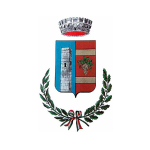Church of St. Hilary (chiesa di Sant'Ilario)
Highlights
Eighteenth-century church (the apse part dates back to the fifteenth century).
The first parish of the village was St. Hilary which, as it happened until the fifteenth century, stood isolated in the countryside far from the inhabited center.
It consists of a semicircular stone apse in which two rectangular single-lancet windows open and a single rectangular nave, also in stone, covered by two brick cross vaults, illuminated by two large windows and a small opening onto the facade.
Only the apse part dates back to the 15th century, while the vaults, bell tower and facade are from the 18th century.
Around the church — which after being for years in a state of complete abandonment is now partly restored thanks to the efforts of a family that owns the neighboring house — there was a small cemetery.
Inside, the entire apse has almost illegible traces of late 15th century frescoes, and some fragments can be glimpsed on the walls.
In the sub-arch and around the two single-lancet windows of the apse there are significant crude decorations with racemes, interspersed only in the sub-arch by roundels with human figures; there are still remnants of the velarium.
In the center of the apse stands out the figure of St. Hilary on a cathedra; to his right an unrecognizable warrior saint, perhaps St. Martin, then St. Guido (with the name Uido written at the top, it is perhaps the oldest representation of the saint present in the diocese), St. Bernardine of Siena, a tondo with a face, and St. Thomas with the symbol of the belt.
To the left of St. Hilary we have a now ruined niche that perhaps contained Our Lady with Child, then St. Peter, St. James, St. Paul.
In the basin are efficienced the symbols of the Evangelists surrounding a Crito Pantocrator.
It is a work of naive workmanship, very archaic compared to the presumed age of composition: the Saints are rigidly arranged in colored squares, without accuracy in the rendering either clothing, backgrounds, or details (e.g., the Duomo of Acqui held up by St. Guido is little more than a stylization of a church).
As for the dating, the presence of St. Bernardino indicates that the work was carried out after the middle of the 15th century.
A further chronological clarification may come from the fact that the St. Guido seems to strongly depend on the one sculpted by Pilacorte on the portal of the Cathedral of Acqui, in 1481.
The painter proves, from what can be read of his work today, to be a modest fresco painter, sensitive to the influences of local painting.
Insights
Comune di Cassinasco
https://www.comune.cassinasco.at.it/
- L'antica chiesa di Sant' Ilario
https://www.comune.cassinasco.at.it/it/page/l-antica-chiesa-di-sant-ilario
Catalogo generale dei Beni Culturali
https://catalogo.beniculturali.it
- Chiesa Parrocchiale di Sant'Ilario
https://catalogo.beniculturali.it/search/Site/c301e5451a462a00b9abd5c43624b914
See also
News from Cassinasco
-
Discover the latest news posted on the website of the Municipality of Cassinasco
https://www.comune.cassinasco.at.it/it/news
Events in Cassinasco
-
Discover the events posted on the website of the Municipality of Cassinasco
https://www.comune.cassinasco.at.it/it/events



